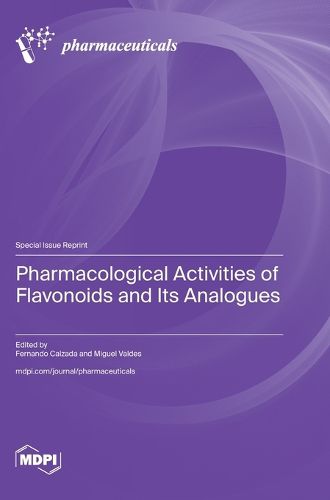Readings Newsletter
Become a Readings Member to make your shopping experience even easier.
Sign in or sign up for free!
You’re not far away from qualifying for FREE standard shipping within Australia
You’ve qualified for FREE standard shipping within Australia
The cart is loading…






Dear Colleagues,
The development of new drugs continues to be an important point for global society. In recent years, there has been increased interest in the study of polyphenols due to the multiple pharmacological activities that they have demonstrated. Flavonoids are a class of polyphenols that have been widely studied; they are characterized as having a 15-carbon skeleton with a 2-phenylbenzopyranone core structure. They are classified as flavones, isoflavones, flavonols, anthocyanidins, flavanones, flavanols, chalcones, and aurones. Within the various classes, further differentiation is possible based on the number and nature of substituent groups attached to the rings; moreover, flavonoids can exist as free aglycones or conjugated glycosidic bonds. Flavonoids are present in almost all types of nourishment, and recent studies have focused on their biological, nutritional, pharmacological, and medicinal relevance. These kind of molecules, as well as their analogues, are of utmost relevance due to their multiple applications. Considering the above, we invite researchers to publish their findings on the pharmacological applications of flavonoids, as well as their analogs, while highlighting the importance of using these molecules as a basis for the development of new drugs.
$9.00 standard shipping within Australia
FREE standard shipping within Australia for orders over $100.00
Express & International shipping calculated at checkout
Dear Colleagues,
The development of new drugs continues to be an important point for global society. In recent years, there has been increased interest in the study of polyphenols due to the multiple pharmacological activities that they have demonstrated. Flavonoids are a class of polyphenols that have been widely studied; they are characterized as having a 15-carbon skeleton with a 2-phenylbenzopyranone core structure. They are classified as flavones, isoflavones, flavonols, anthocyanidins, flavanones, flavanols, chalcones, and aurones. Within the various classes, further differentiation is possible based on the number and nature of substituent groups attached to the rings; moreover, flavonoids can exist as free aglycones or conjugated glycosidic bonds. Flavonoids are present in almost all types of nourishment, and recent studies have focused on their biological, nutritional, pharmacological, and medicinal relevance. These kind of molecules, as well as their analogues, are of utmost relevance due to their multiple applications. Considering the above, we invite researchers to publish their findings on the pharmacological applications of flavonoids, as well as their analogs, while highlighting the importance of using these molecules as a basis for the development of new drugs.